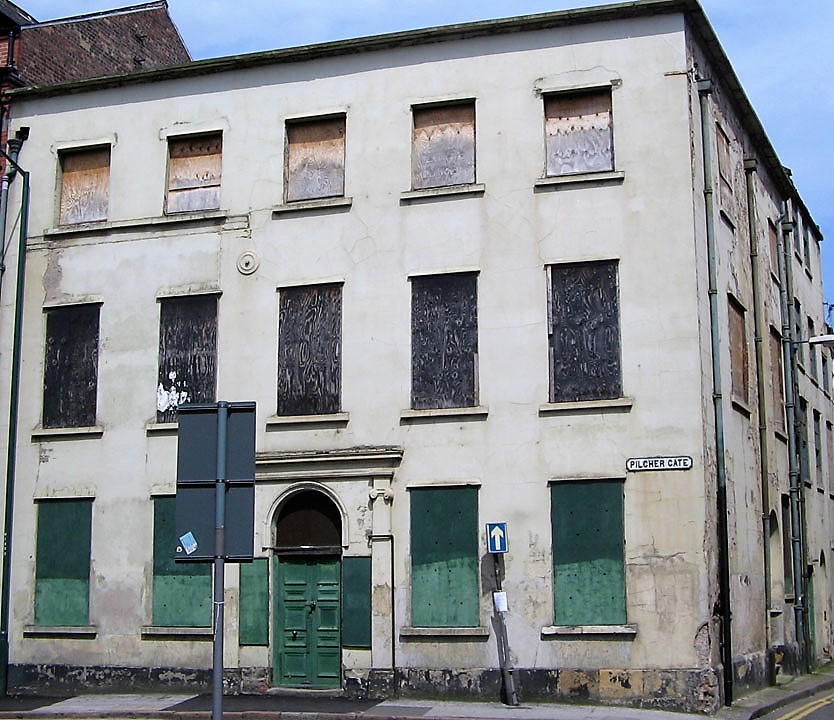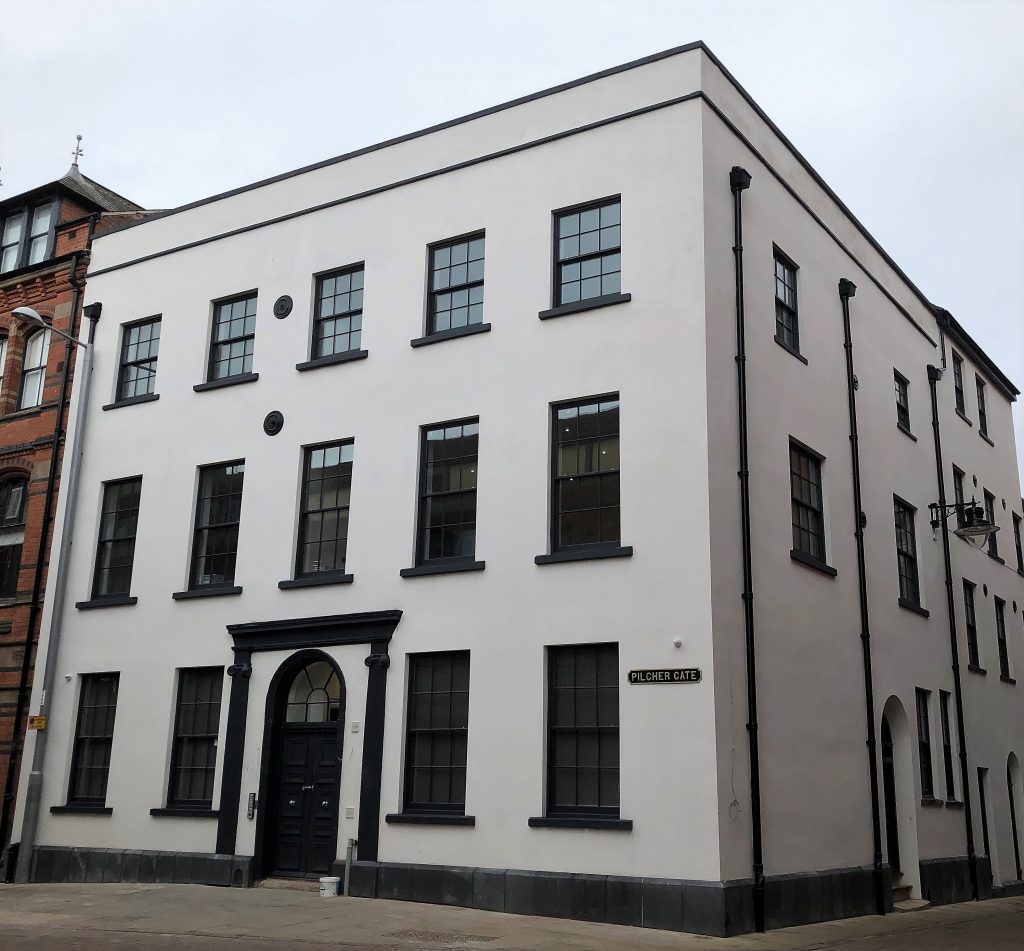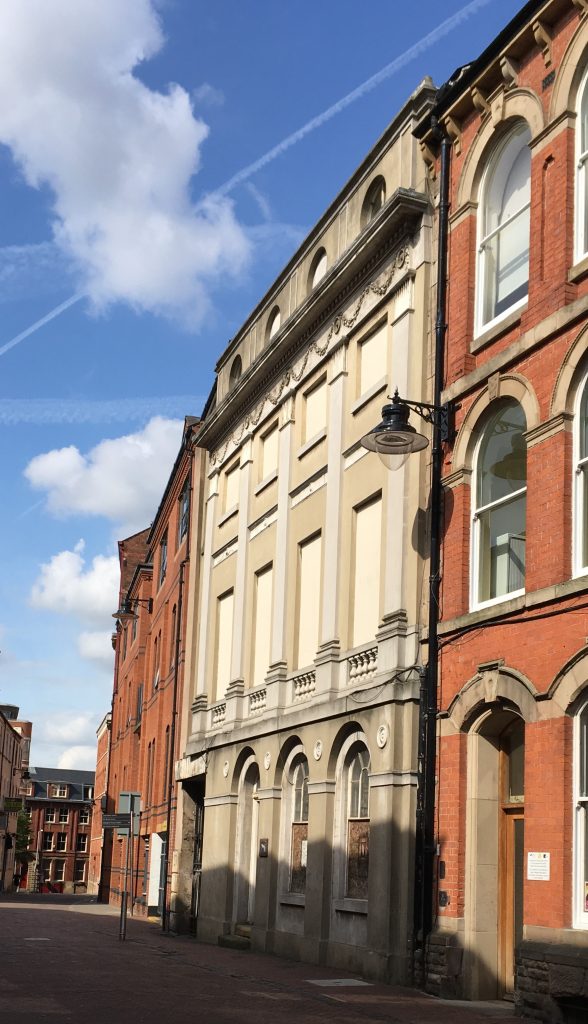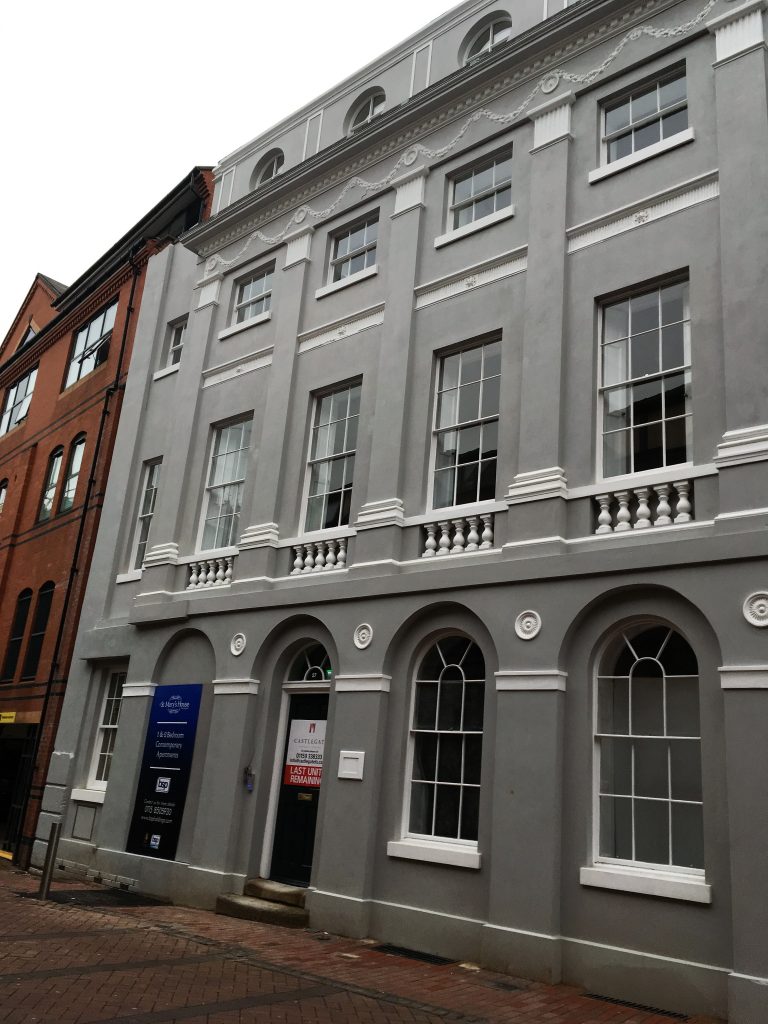A City Council review of Nottingham’s Building at Risk register has found that nearly half of the properties have been repaired and brought back into use.
Historic England holds a register of Scheduled Monuments, Grade I and II* Listed Buildings, Conservation Areas, Registered Parks and Gardens, Registered Battlefields and Shipwrecks, but councils are responsible for assessing the condition of Grade II Listed Buildings, which account for 93% of all Listed Buildings, and are required to hold their own Buildings at Risk registers. Heritage and Building at Risk registers help to highlight poor conditions and focus support and funding to owners to address it.
As part of Nottingham’s Heritage Action Zone project, which is supported with funding from Historic England, Nottingham City Council has been working with Nottingham Civic Society to assess the condition of all 757 Grade II listed buildings in the city.
In 2013, the register showed 10%, or 78 Grade II Listed Buildings in Nottingham, most of which are privately owned, were at risk, meaning they were in poor condition, vacant or both. Since 2013, 43% of the entries at risk have now been brought back into good condition with new uses. Some of these buildings have been brought into better condition by their private owners, but many others have been secured by Nottingham City Council through negotiation, enforcement action or grant-aid. Nottingham’s award-winning Heritage Strategy has been the catalyst for many Buildings at Risk in the city being targeted for action.
Some of the biggest success stories can be found in the Pilcher Gate and St Mary’s Gate area of the city centre. Sherwin House or 41 Pilcher Gate was a Building at Risk for many decades. The building was one of the earliest house in the city and dates back to between 1689 and 1699. During the 1940s the building was used as a lace warehouse but was already in a poor condition. In 2013, Mabec Properties started the restoration of the building, which involved taking down a significant part of the walls to stabilise the structure. Recently the building restoration has been unveiled and it has now been brought back into use as an office with accommodation above after decades of vacancy.

41 Pilcher Gate before works
41 Pilcher Gate afterworks
Another building in terrible condition in 2013 was 27 St Mary’s Gate, which was built as a house in the late 1700s. In 2018/19, work started to bring the building back into use by BSP properties. Outside, the building’s historic character was completely restored, while inside, the building was converted into luxury apartments, bringing it back into use and giving it a new lase of life.

27 St Mary’s Gate, before works
27 St Mary’s Gate, after works
IThree other buildings on the 2013 Building at Risk register have received grant funding through the Nottingham Heritage Action Zone, which is supported by Historic England and aims to restore the buildings’ historic shopfronts and features. These include the Birkin Building on Broadway, which has now been removed from the register.
Councillor Linda Woodings, Nottingham City Council’s Portfolio Holder for Planning, Housing & Heritage, said: “We’ve been working in partnership with local businesses, organisations and building owners for a number of years, to help regenerate and restore Nottingham’s important historic buildings and assets.
“The Building at Risk register is really important in highlighting poor conditions in buildings of special interest to the city, and then being able to focus support where it is needed to help address the issues.
“We’re really proud of Nottingham’s unique heritage, and by protecting and bringing these buildings back into use, we are not only showcasing the city’s fascinating history and character, but also preserving them for future generations.”
Clive Fletcher, Principal Advisor and Lead Specialist at Historic England, said: “Historic England greatly welcome the City Council’s publication of the Listed Buildings at Risk Register for Nottingham, as part of the Nottingham Heritage Action Zone.
“Comparisons with the previous register show some notable successes, and some wonderful buildings have been brought back into use and repaired since the adoption of the Heritage Strategy. These buildings, some of which seemed to have decayed beyond hope, demonstrate the regenerative value of our heritage and the positive impact they can have.
“However, it also shows some significant challenges, and the monumental Great Northern Goods Shed is probably the highest profile one on this list, having lain disused and neglected for several decades.
“We trust that highlighting the plight of these buildings will assist the council and the wider community in the task of securing the future of these buildings for future generations”.
44 entries remain on the Buildings at Risk register, which is 6% of the 757 grade II Listed Buildings in Nottingham. Nottingham City Council are working hard to secure the future of the Great Northern Warehouse through the planning process for the Island Quarter and going forward, The City of Nottingham Historic Buildings Trust will be putting plans forward to save buildings such as Bulwell Hall Stables, which has been on the Building at Risk register since 2013.
Cllr Pavlos Kotsonis, Trustee of the City of Nottingham Historic Buildings Trust, said: “There has been great progress at tackling Heritage at Risk in Nottingham in the past 5 years with lots of buildings being removed from the Buildings at Risk register.
“The City of Nottingham Historic Buildings Trust will use the Building at Risk register to target buildings and work with owners to source funding and secure the future of these Listed Buildings”.
To view the results of the review of Nottingham’s 2013 At Risk register visit:
https://www.nottinghamcity.gov.uk/information-for-business/planning-and-building-control/building-a-better-nottingham/heritage-regeneration/nottingham-building-at-risk-register/
